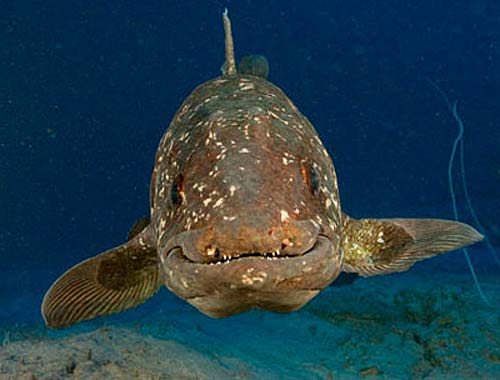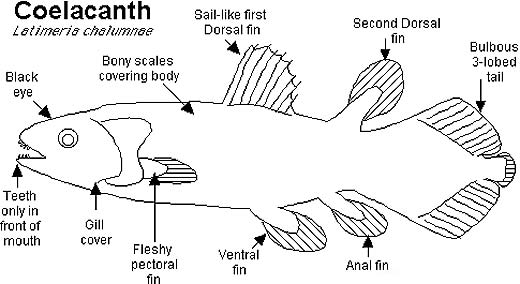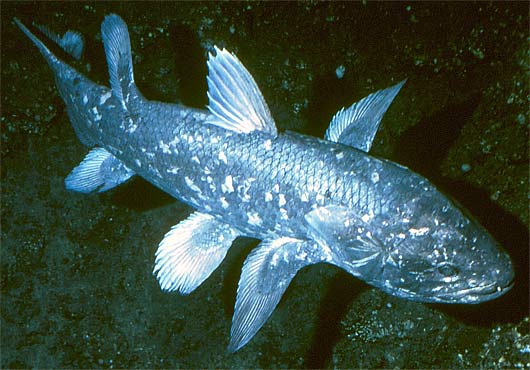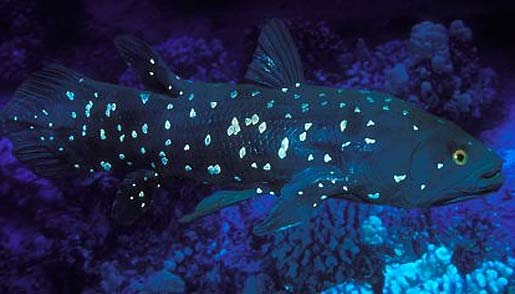Coelacanth – No Need For Evolution

Once believed to be long extinct (since the dinosaur days), the coelacanth is an order of fish (2 species) that was discovered alive and thriving off the coast of Africa (in the Indian Ocean) in the 1930s. The fish’s name means “hollow spine”, and it’s named such for its hollow spine fins. it has 8 fins in total: 2 dorsal, 2 pectoral, 2 pelvic, 1 anal and 1 caudal. They are also covered in cosmoid scales that function as a sort of armor, protecting it from the attacks of other fish and ocean-dwellers. It is thought that the fish might have taken this form about 400 million years ago! It sounds like these fish are pretty comfortable just being themselves.

The coelacanth is nocturnal, feeding at night on benthic fish by drift-hunting. Its method of locomotion is unique; they generally drift with the down and up-swelling of the water, but they also use their high number of fins to make fast and erratic movements when needed, and to swim in ways other fish can’t (upside down or “in a headstand”). It is also believed that coelacanths possess some sort of electro-perception, and use it to help in navigating obstacles, and in recognizing one another.

Despite the fact that coelacanths are nearly inedible for humans (they’re considered too oily and ingestion usually causes sickness), they still find themselves in danger because they inhabit waters that are frequently fished and are considered valuable research subjects. When they’re accidentally caught, they aren’t thrown back, but are instead sold to science.
Coelacanths generally inhabit the coasts of Kenya, Comoros, Tanzania, Mozambique, South Africa, Madagascar and Indonesia.

